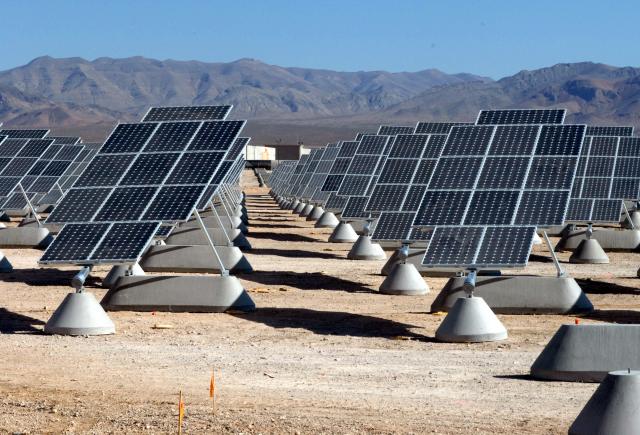A new Energy Initiatives Office Task Force will help the Army face challenges associated with rising fuel costs.
The formation of the new office was announced Aug. 10 by Secretary of the Army John McHugh during a presentation at the GovEnergy Conference in Cincinnati, Ohio.
It is expected the task force will be fully operational by Sept. 15, and will help develop the large-scale renewable energy projects the Army will need to achieve energy security, Army officials said. Energy security means ensuring there is always energy available to continue the Army mission uninterrupted, even if the civilian power grid is unavailable.
“The Energy Initiatives Office Task Force will help the Army build resilience through renewable energy while streamlining our business practices so developers can invest in and build an economically viable, large-scale renewable energy infrastructure,” said McHugh. “To meet a goal of 25-percent renewable energy by 2025, the Army must use every opportunity to be energy efficient and draw power from alternative and/or renewable energy sources.”
During a press conference via telephone that followed McHugh’s announcement in Ohio, the secretary, along with Katherine Hammack — assistant secretary of the Army for Installations, Energy and Environment — discussed the implications of the new task force and the goals the Army has for it. The new task force is part of IE & E.
“This is focused entirely on (the continental United States) and large-scale renewable, almost utility-scale renewable projects, on CONUS, that would offset all or part of the energy needs of a permanent installation,” Hammack said. “When we are looking at projects, we are looking at about the 10-megawatt size, plus or minus a little bit. Or it could be larger. We are looking at large-scale renewable energy projects, on Army installations.”
McHugh said the Army has about 126 renewable energy projects ongoing, including one at Fort Irwin, Calif., where a solar-energy project will cover a land mass “about the size of the island of Manhattan.”
But the Army is looking to develop even more partnerships, McHugh said.
“What we are looking toward is a better partnership and an infusion quite frankly of private-sector investments where it would be a win-win situation,” McHugh said.
Such situation would be one where the Army gets a reliable and local source of energy, while the developer, who builds the project, gets both a full-time, guaranteed customer in the Army — along with the ability to sell excess electricity to the local power grid, McHugh said.
According to an Army press release, investment by industry will need to be about $7.1 billion over the next 10 years in order for the Army to meet its enhanced energy security goals. It’s expected with that level of investment, about 2.1 million megawatt hours of power can be generated annually for the Army.
“The task force I announced today is specifically directed toward basically power production,” McHugh said. “We’re looking to meet our goal of renewable energy utilization by 2025.”
Hammock said that despite concerns the Army has been characterized as “difficult to deal with,” she feels confident the energy task force will help the Army and industry partner to meet the 25-percent renewable energy goal.
“We have great individuals at our garrisons who are working hard to advance this, but the energy initiatives task force will be staffed with experts in finance, renewable technologies, project management, and work in concert with the garrisons to expedite these projects so they can be executed in appropriate time frames,” Hammack said.










